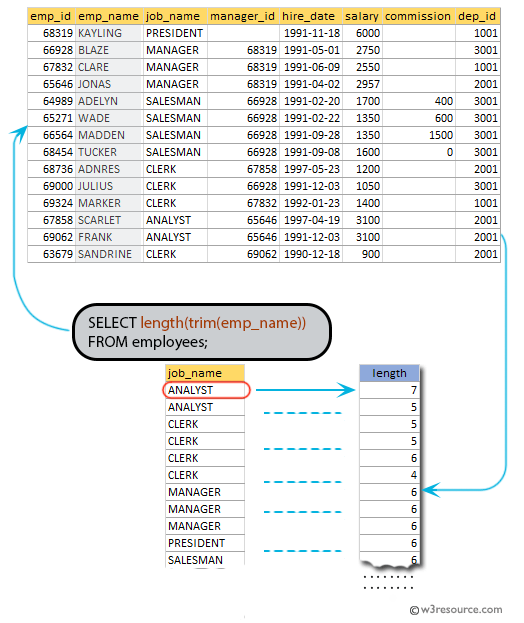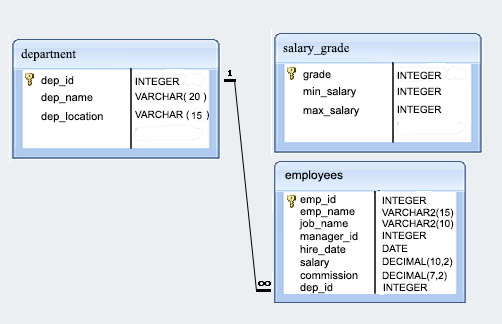SQL Exercise: Without the spaces, count each employee name characters
[An editor is available at the bottom of the page to write and execute the scripts.]
8. From the following table, write a SQL query to count the number of characters except the spaces for each employee name. Return employee name length.
Sample table: employees
Pictorial Presentation:
Sample Solution:
SELECT length(trim(emp_name))
FROM employees;
Sample Output:
length
--------
7
5
5
5
7
5
8
6
4
6
6
6
6
6
(14 rows)
Explanation:
The given query in SQL that selects the length of the trimmed employee names for all rows in the 'employees' table.
In the "trim" function, leading or trailing spaces are removed from the employee name, and the "length" function returns the length.
Go to:
PREV : Employees with Hiredate in format February 22, 1991.
NEXT : List employees id, salary, and commission.
Practice Online
Sample Database: employees
Have another way to solve this solution? Contribute your code (and comments) through Disqus.
What is the difficulty level of this exercise?
Test your Programming skills with w3resource's quiz.


